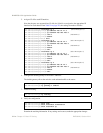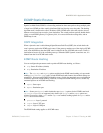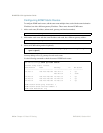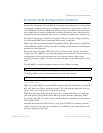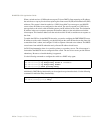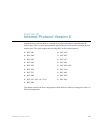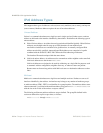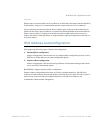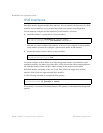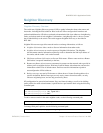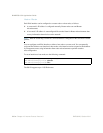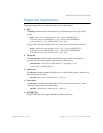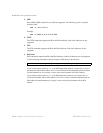
BLADEOS 6.5.2 Application Guide
BMD00220, October 2010 Chapter 16: Internet Protocol Version 6 231
IPv6 Address Format
The IPv6 address is 128 bits (16 bytes) long and is represented as a sequence of eight 16-bit hex
values, separated by colons.
Each IPv6 address has two parts:
Subnet prefix representing the network to which the interface is connected
Local identifier, either derived from the MAC address or user-configured
The preferred hexadecimal format is as follows:
xxxx:xxxx:xxxx:xxxx:xxxx:xxxx:xxxx:xxxx
Example IPv6 address:
FEDC:BA98:7654:BA98:FEDC:1234:ABCD:5412
Some addresses can contain long sequences of zeros. A single contiguous sequence of zeros can be
compressed to :: (two colons). For example, consider the following IPv6 address:
FE80:0:0:0:2AA:FF:FA:4CA2
The address can be compressed as follows:
FE80::2AA:FF:FA:4CA2
Unlike IPv4, a subnet mask is not used for IPv6 addresses. IPv6 uses the subnet prefix as the
network identifier. The prefix is the part of the address that indicates the bits that have fixed values
or are the bits of the subnet prefix. An IPv6 prefix is written in address/prefix-length notation. For
example, in the following address, 64 is the network prefix:
21DA:D300:0000:2F3C::/64
IPv6 addresses can be either user-configured or automatically configured. Automatically
configured addresses always have a 64-bit subnet prefix and a 64-bit interface identifier. In most
implementations, the interface identifier is derived from the switch's MAC address, using a method
called EUI-64.
Most BLADEOS 6.5 features permit IP addresses to be configured using either IPv4 or IPv6
address formats. Throughout this manual, IP address is used in places where either an IPv4 or IPv6
address is allowed. In places where only one type of address is allowed, the type (IPv4 or IPv6 is
specified.




